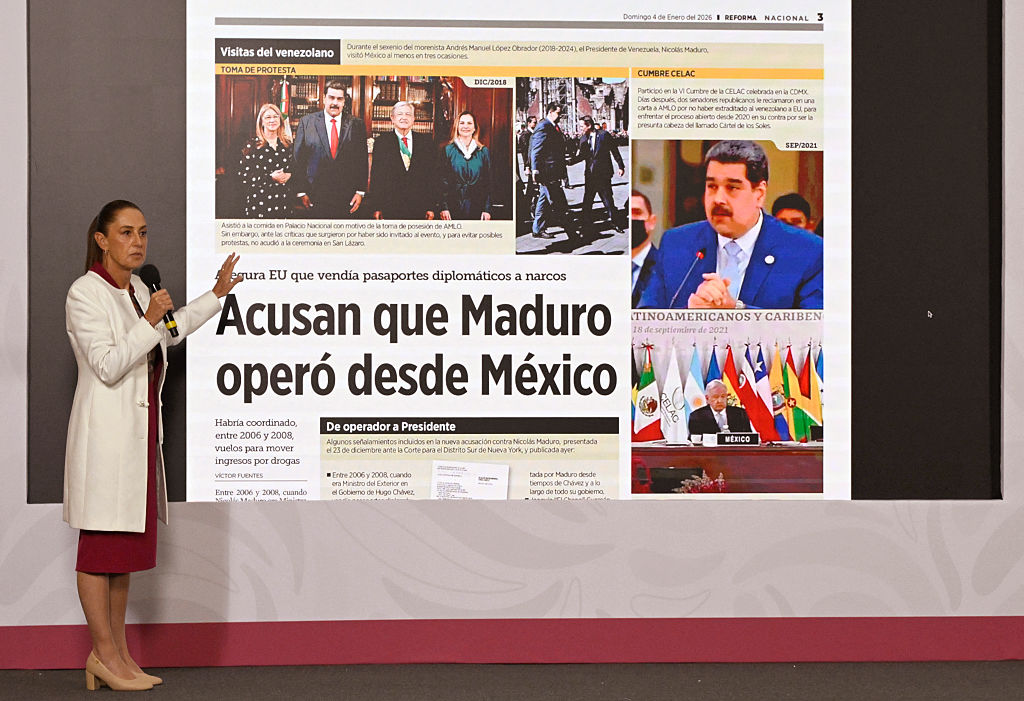Guns, Connecticut, and Mexico
Guns, Connecticut, and Mexico
In an article for PODER, AS/COA's Eric Farnsworth explores the illegal flow of guns from the United States to Mexico in the context of Washington's current gun control debate.
The tragedy in Newtown is forcing reflection on guns, and that should include the guns flowing from the United States to Mexico.
For years the government of Mexico has asked the United States to tighten border controls to reduce the number of high-powered weapons crossing into Mexico. Mostly, their entreaties have been resisted beyond the botched Fast and Furious initiative. That may be about to change, thanks to the horrendous December rampage at Sandy Hook Elementary School in Newtown, Conn., in which 20 first graders and six of their guardians were slaughtered by an assailant wielding a Bushmaster .223-caliber semiautomatic rifle.
The public revulsion at this act is palpable, bringing home to Americans north of the border what Mexicans have been facing for years and provoking, for the first time in memory, a true national conversation about guns. Even the National Rifle Association got into the act, belatedly, suggesting that it is now willing to make “meaningful contributions” to ensure that such an event never again occurs.
Unfortunately, the record is not reassuring. After all, the killings in Connecticut occurred only days after another shooter opened up in a shopping mall in Oregon, killing two, and less than five months after the Aurora, Colo., movie theater assault which killed 12 and wounded 59 others. Since the 1999 attack at Columbine, where 13 were murdered and 21 injured, mass killings have continued at a breathtaking pace across the United States. The scroll of “major” mass killings includes Tucson in 2011, where six where murdered and 12 wounded including Congresswoman Gabby Giffords; Ft. Hood, Texas, Binghamton, N.Y., and Alabama in 2009; Chicago at Northern Illinois University, and Alger, Wash., in 2008. The 2007 massacre at Virginia Tech was the most lethal. The list goes on. Yet none led to significant or meaningful reforms. As incomprehensible, unrelated, and random as each of these killing sprees appears to have been, the easy availability of weapons including high velocity semiautomatic rifles has played a role in the carnage. And our inability to take steps to reduce the risk by reducing supply, even if we can never guarantee ultimate safety, is not just a domestic matter, it is also a foreign policy and national security issue.
When Felipe Calderon concluded his term in office, press reports were full of analysis decrying the toll in human life taken by his necessary yet controversial attack on the drug cartels. Some 60,000 people, according to reports, had been killed, with no end in sight. These numbers are incomprehensible to most Americans, even if much of the killing was cartel-on-cartel violence. It is the scourge under which Mexico and, increasingly, Central America, has been laboring for several years. New president Enrique Pena Nieto has vowed to reduce the violence. He now has to figure out how. One of his priorities will surely be to reduce the firepower available to the cartels and others, and he can only do this with U.S. cooperation, as much of the weaponry used in violent acts in Mexico comes from the United States. In fact, the weapon used by Adam Lanza at Sandy Hook Elementary is, according to the Washington Post, a “favorite” of the drug cartels. In Central America, the story is starker: the firepower available to the cartels has enabled them to challenge the basic authority of the state in some places, such as Guatemala’s huge Peten region. This raises questions about state control of territory and the appropriate government approach to security, particularly given a long history of human rights abuses across the region.
The cartels have no apparent desire to overthrow governments, nor can they accurately be described as “insurgents.” Rather, their actions are designed to intimidate governments sufficiently at the local and national levels in order to conduct their activities unmolested, or even to have them facilitated by corrupt officials. It goes without saying that such actions reduce trust and effectiveness in government by increasing corruption and have the effect of hollowing out democratic institutions including the administration of justice, a basic prerequisite of government legitimacy. Illegal cartels weaken democracy in a region where democracy is still under development. By doing so, they undermine U.S. strategic interests. It is therefore unfathomable that we would not do everything possible to reduce the U.S. flow of weapons to the region, including high powered military-style weapons legitimately provided to governments unable to secure them or keep them away from the cartels.
Newtown will forever hence be associated with the Sandy Hook Elementary School killings. The dead cannot be revived, but they can be honored. If, by finally taking meaningful steps in the wake of the tragedy to increase our own safety, we also increase the safety of the citizens of Mexico and Central America, it would be one positive, if long overdue, result.
Eric Farnsworth is vice president of Americas Society/Council of the Americas in Washington, D.C.
This article is a preview from the February 2013 issue of PODER magazine.








